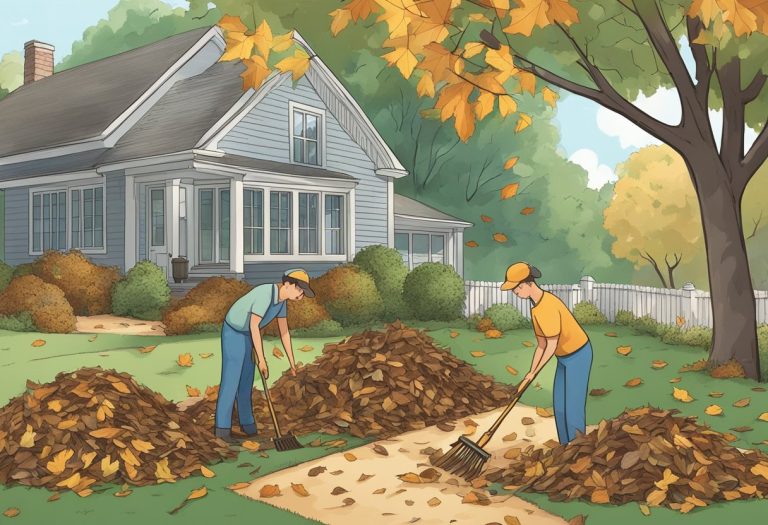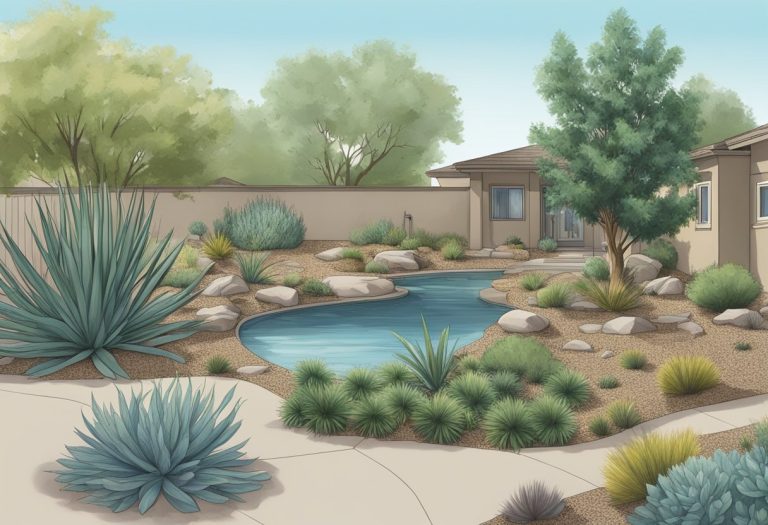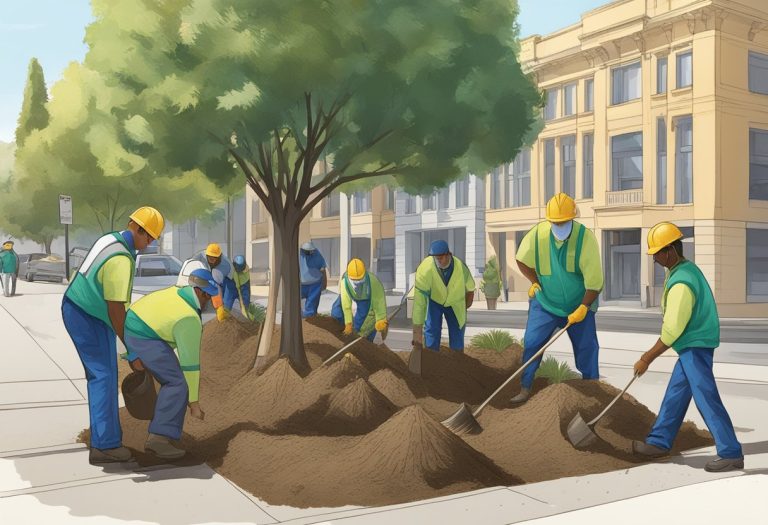Lawn Care and Maintenance in Sacramento: Essential Tips for a Lush Garden
Lawn care in Sacramento is greatly influenced by its unique climate and soil conditions. Known for its hot-dry climate zone, the city experiences warm summers and mild winters. Homeowners must adapt their lawn maintenance strategies to these environmental factors.
Understanding Lawn Care Basics in Sacramento

Below is a distilled guide covering key aspects of lawn care in this region:
Climate Considerations:
Sacramento has long, warm summers and cool winters, making it necessary to choose grass types and care techniques that endure these conditions. The warm season is the most active growing period for lawns in this area.
Soil Management:
The soil in Sacramento is often a blend of loam, clay, and silt, which can require specific strategies for nutrient management and aeration.
Irrigation Tips:
Given Sacramento’s propensity for drought conditions, efficient watering practices are essential. Lawns should be watered deeply but infrequently to promote strong root systems and reduce water waste.
Seasonal Lawn Care:
- Spring: Aeration, fertilization, and pre-emergent herbicide application help lawns recover from winter and prepare for growth.
- Summer: Adjust cutting height, water early in the morning, and manage pests as needed.
- Fall: Overseed if necessary, continue mowing, and apply fertilizer to strengthen roots for winter.
- Winter: Minimize foot traffic on grass and protect from frost.
Understanding these fundamentals ensures a lush, healthy lawn that enhances one’s property and aligns with Sacramento’s environmental sustainability goals.
Seasonal Lawn Maintenance Strategies

In Sacramento, each season brings unique lawn care needs, from revitalizing the grass in spring to protecting it against cooler temperatures in winter.
Spring Lawn Revival
Spring is crucial for setting up your lawn’s success throughout the year. It begins with assessing the type of grass and ensuring proper care, as LawnStarter suggests. Tasks include watering adequately, removing thatch, aerating compacted soil, and applying fertilizer appropriate for the grass type.
- Watering: Begin regular, deep watering to encourage root growth.
- Thatch Removal: Dethatching removes dead grass and other debris that can stifle new growth.
- Aeration: This promotes oxygen and water circulation, especially for compacted soils.
- Fertilization: Use a balanced fertilizer to feed the lawn after dormancy.
Summer Lawn Preservation
During the hot Sacramento summers, lawn maintenance focuses on preserving the health of the grass. Regularly mowing, watering, and monitoring for pests are key steps to maintain a lush lawn.
- Mowing: Higher cut heights help protect the root system by providing shade.
- Watering: Consistent and deep early morning watering reduces evaporation and stress on the grass.
- Pest Control: Vigilance against common pests like grubs can prevent widespread damage.
Fall Lawn Preparation
Fall is the time to prepare the lawn for the colder months. Homeowners should overseed, fertilize, and continue pest control to ensure the lawn remains robust.
- Overseeding: Introducing new grass seeds helps in filling in bare patches and improving lawn density.
- Fertilization: A fall-specific fertilizer prepares grass for winter dormancy.
- Pest Control: Eliminate any lingering pests before they hibernate or lay eggs.
Winter Lawn Protection
Winter conditions in Sacramento are relatively mild, but lawns still need protection. Minimal watering and avoiding foot traffic on frosty grass are critical practices.
- Watering: Reduce frequency but ensure the soil does not completely dry out.
- Traffic Minimization: Prevent damage to dormant grass by reducing lawn activity during colder days.
Irrigation and Water Conservation in Sacramento

In Sacramento, thoughtful landscape irrigation and effective water conservation are essential for maintaining lush lawns while adhering to environmental regulations. With Sacramento’s Mediterranean climate, the region faces dry summers, making efficient water use necessary to support healthy landscapes.
Watering Schedules and Restrictions
Sacramento County imposes specific watering schedules to help conserve water:
- Odd-Numbered Addresses: Water on Tuesday, Thursday, and Saturday.
- Even-Numbered Addresses: Water on Wednesday, Friday, and Sunday.
- No Watering: All addresses are prohibited from watering on Mondays.
Efficient Irrigation Systems
Experts recommend the use of drip irrigation systems for efficiency. These systems deliver water directly to the roots, reducing water loss through:
- Evaporation: Minimal exposure to air.
- Runoff: Lower water flow rate than traditional sprinklers.
Homeowners are advised to schedule regular maintenance to ensure their irrigation systems are functioning optimally.
Conserving Water
Individual contributions to water conservation in Sacramento can include:
- Installing “smart” controllers that adjust watering based on weather conditions.
- Applying mulch to reduce evaporation from soil.
- Choosing native plants that require less water and are suited to Sacramento’s climate.
For more detailed information on local restrictions and recommendations, the Sacramento County’s Water Conservation FAQs can provide valuable guidance to homeowners seeking to balance lawn health with sustainable practices.
Professional Assistance
Homeowners seeking professional irrigation and drainage services can find reputable companies such as Landscape Irrigation and Drainage Sacramento Service | Lawnman that specialize in efficient and sustainable lawn care solutions.
Through strategic irrigation practices and mindful water use, Sacramento residents can enjoy verdant outdoor spaces while conserving a precious resource.
Common Lawn Pests and Diseases
In Sacramento, homeowners often face the challenges of combating lawn pests, such as grubs and insects, as well as managing various fungal diseases that can compromise the health and appearance of their lawns.
Grub and Insect Control
Grubs are the larvae of scarab beetles, and they feed on the roots of grass, leading to brown, spongy areas in the lawn. Control measures include regular monitoring and timely application of biological controls or chemical treatments when necessary. Another common pest in Sacramento is the chinch bug, which causes grass to yellow and die. Insecticidal soaps or nicotinoid-based pesticides may be employed to address infestations.
- Seasonal monitoring: Spring and early summer
- Treatment options: Nematodes (Heterorhabditis spp.), Bacillus thuringiensis
Fungal Diseases Management
Fungal diseases like brown patch can be prevalent in Sacramento lawns, especially when humidity is high. Homeowners should adopt cultural practices such as proper mowing and irrigation to prevent conditions that foster fungal growth. In the event of an outbreak, fungicides can be utilized to control the spread of the disease.
- Preventive practices: Aeration, reduced watering frequency
- Fungicide examples: Chlorothalonil, propiconazole
It is essential to identify the specific pest or disease correctly to choose the most effective treatment and control strategy.
Lawn Renovation and Upkeep
Proper care in Sacramento’s climate is essential for a healthy lawn. Lawn renovation and upkeep involve a series of steps tailored to revitalize turf, enhance its appearance, and sustain its health.
Aeration and Overseeding
Aeration is the process of making small holes in the lawn to allow air, water, and nutrients to penetrate the grass roots. This helps the roots grow deeply and produce a stronger, more vigorous lawn. For the best results, one should aerate in the fall or early spring. Overseeding follows aeration, which introduces new grass seed to fill in bare areas and improve the density of the lawn. Sacramento’s warm seasons are ideal for overseeding with appropriate grass varieties such as tall fescue or Bermuda grass.
- Benefits of Aeration and Overseeding:
- Improves root development
- Enhances turf density and color
- Reduces soil compaction
Fertilization and Weed Control
Lawn fertilization involves applying nutrients that grass needs to grow thick and green. A balanced fertilizer that contains nitrogen, phosphorus, and potassium is recommended for the Sacramento area’s specific soil conditions. It’s crucial to fertilize at the right times of the year to stimulate growth and hardiness. In addition to fertilization, effective weed control ensures a lawn free of invasives that compete with grass for resources. Pre-emergent herbicides can prevent weed seeds from germinating, while post-emergent herbicides deal with existing weeds.
- Key Aspects of Fertilization and Weed Control:
- Apply balanced fertilizer every 6-8 weeks during the growing season
- Use pre-emergent herbicides in early spring
- Employ post-emergent herbicides as needed
Essential to maintaining a lush and resilient lawn in Sacramento, these methods employed in lawn renovation and upkeep can greatly influence the health and appearance of your outdoor space.






